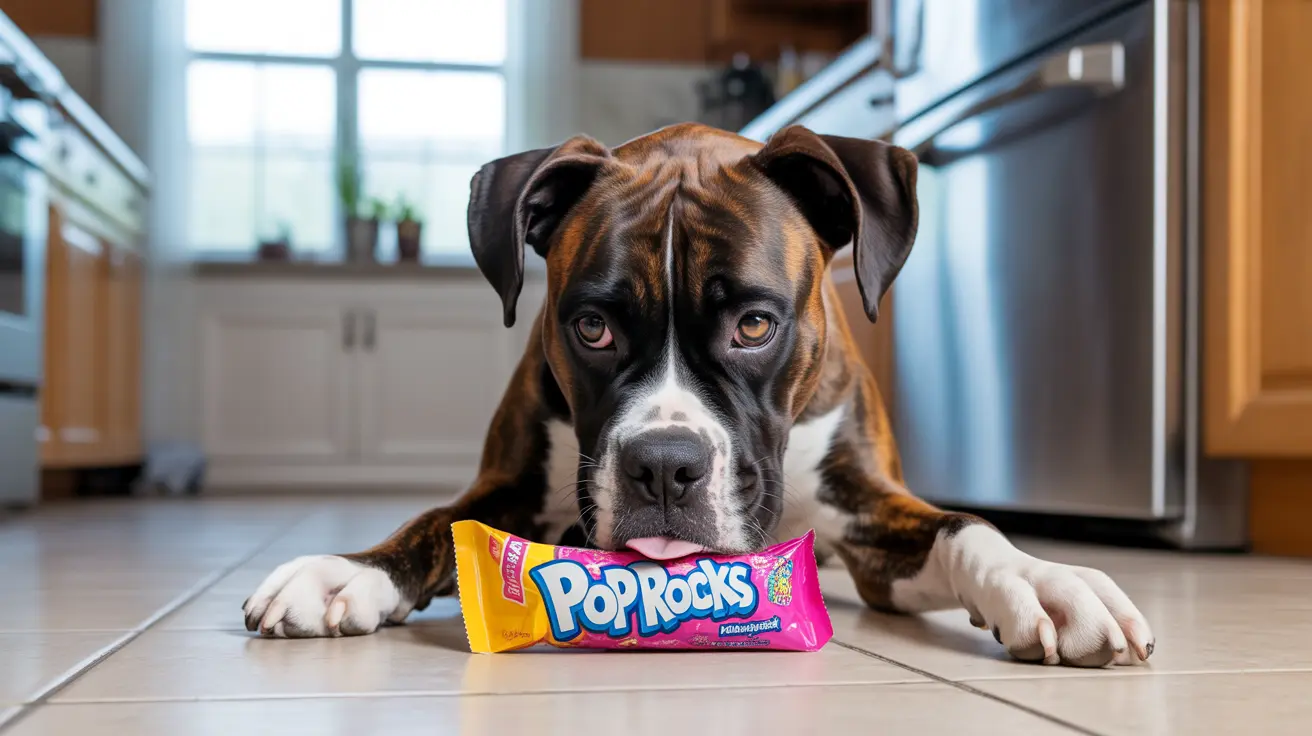Introduction
As pet owners, we often wonder about sharing human treats with our furry friends. Pop Rocks, the fizzy candy known for its explosive sensation, raises particular concerns among dog owners. While not explicitly toxic, these candies can pose several risks to our canine companions. Let's explore whether dogs can have Pop Rocks and understand the potential dangers associated with this unique confection.
Understanding Pop Rocks and Their Effect on Dogs
Pop Rocks are carbonated candy crystals that create a popping sensation when they dissolve in your mouth. They contain sugar, lactose, corn syrup, and pressurized carbon dioxide bubbles. While this creates an entertaining experience for humans, it can be quite different for dogs.
The sudden popping sensation can startle dogs, potentially causing stress or anxiety. Moreover, the ingredients in Pop Rocks aren't suited for canine consumption, regardless of the novel fizzing effect.
Health Risks of Pop Rocks for Dogs
Several components of Pop Rocks make them inappropriate for dogs:
- High sugar content that can lead to obesity and diabetes
- Artificial flavors and colors that may cause allergic reactions
- Lactose that can trigger digestive issues
- Carbon dioxide bubbles that may cause discomfort or distress
While a few Pop Rocks might not cause immediate harm, regular consumption could contribute to serious health problems over time.
What Happens If Your Dog Eats Pop Rocks
If your dog consumes Pop Rocks, they might experience:
- Mild gastrointestinal upset
- Temporary confusion or distress from the popping sensation
- Vomiting or diarrhea, especially in sensitive dogs
- Potential choking hazard from the packaging
When to Contact Your Veterinarian
While Pop Rocks themselves aren't typically dangerous in small amounts, you should contact your veterinarian if:
- Your dog has eaten a large quantity
- They've consumed the packaging
- They show signs of severe digestive distress
- They have underlying health conditions
- They display unusual behavior or extreme anxiety
Safe Alternatives to Pop Rocks
Instead of sharing Pop Rocks with your dog, consider these safer options:
- Commercial dog treats designed for their digestive system
- Small pieces of dog-safe fruits or vegetables
- Specially formulated dog-specific reward treats
- Ice cubes for a fun, sugar-free treat
Frequently Asked Questions
Are Pop Rocks safe for dogs to eat?
No, Pop Rocks are not safe for dogs to eat. While not toxic, they contain ingredients that can cause digestive issues and unnecessary stress due to their popping sensation.
What health risks can Pop Rocks pose to my dog if ingested?
Pop Rocks can cause gastrointestinal upset, anxiety from the popping sensation, and potential long-term health issues from high sugar content. The packaging also poses a choking or blockage risk.
What should I do if my dog accidentally eats Pop Rocks or their packaging?
Monitor your dog for signs of distress. If they've eaten the packaging or show concerning symptoms, contact your veterinarian immediately. For small amounts of just the candy, watch for digestive upset.
Why should I avoid giving my dog candies with high sugar and artificial ingredients like Pop Rocks?
High sugar content can lead to obesity, diabetes, and dental problems in dogs. Artificial ingredients may cause allergic reactions or digestive issues, and provide no nutritional value.
How can Pop Rocks affect my dog's behavior or cause stress?
The unexpected popping sensation can startle dogs, potentially causing anxiety or fear. This might lead to food aversion or stress-related behavioral issues.
Conclusion
While Pop Rocks might be a fun treat for humans, they're not appropriate for dogs. The combination of unnecessary ingredients and startling effects makes them unsuitable for canine consumption. Instead, stick to treats specifically designed for dogs to ensure your pet's safety and well-being.






